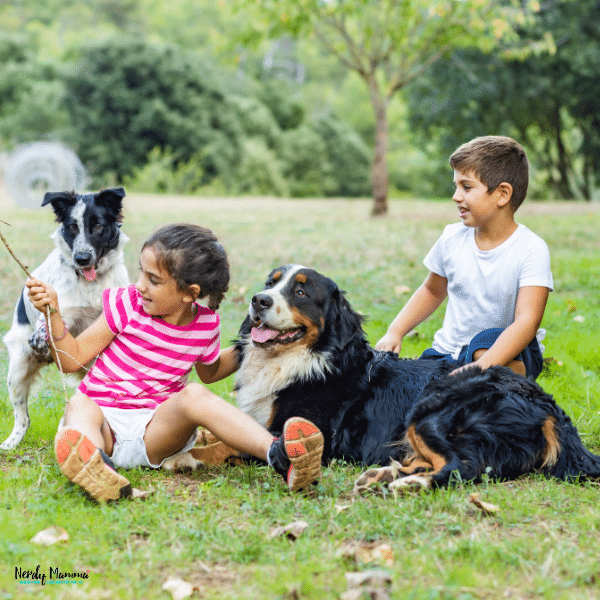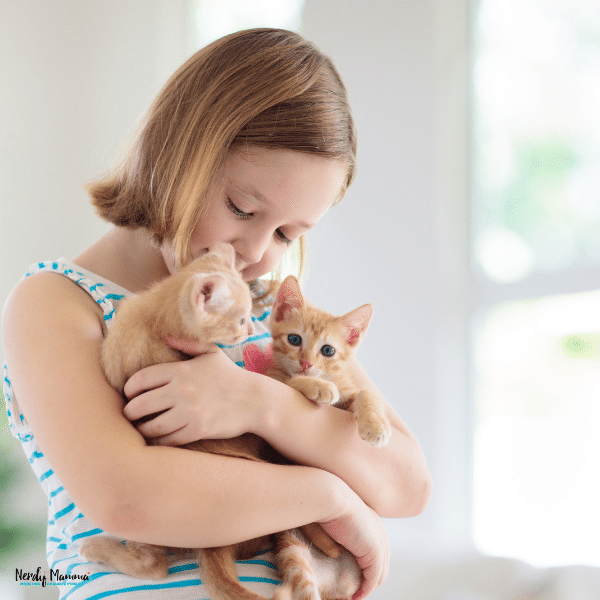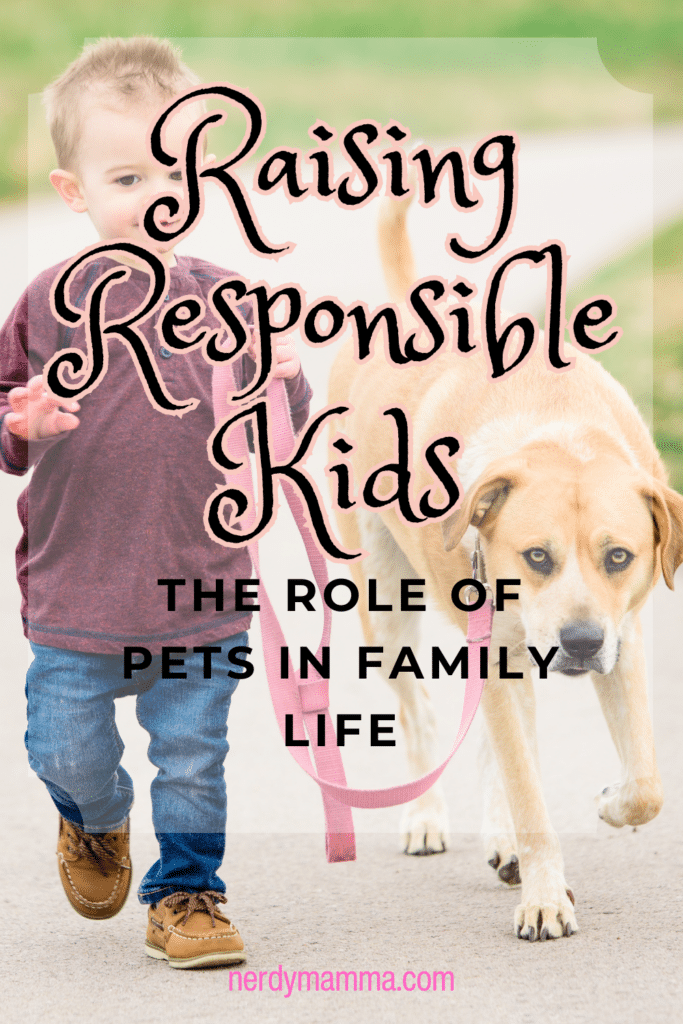In every corner of the world, parents share a common goal: to raise children who are responsible, compassionate, and well-adjusted. Amidst the myriad of methods and philosophies on child-rearing, one simple yet profound strategy often goes unnoticed—the inclusion of pets in family life. Beyond offering companionship, pets are many other things to kids, including silent teachers.

Consequently, this article explores how pets, from the playful puppy to the serene goldfish, contribute significantly to molding children into caring, responsible adults.
The Integral Role of Pets in the Family
Pets offer lessons that are difficult to replicate through any other means, making them invaluable allies in the quest to raise well-rounded individuals. Therefore, you should find the best match for your family. When you do, such a pet can do the following:
Foster a Sense of Responsibility
When a child looks after a pet, such as a dog, they embark on a learning journey that encompasses feeding, walking, and cleaning up after the pet. These activities are lessons in responsibility, time management, and empathy.
For instance, feeding a dog teaches children the importance of nutrition and the need to adhere to a schedule, helping them understand that a pet relies on humans for its well-being. Further, walking the dog becomes an exercise in discipline and physical health, showing children the value of regular exercise and outdoor activities.
This acquired sense of responsibility does not confine itself to pet-related tasks. It translates into other areas of a child’s life, laying a foundation for personal accountability and managing future tasks and responsibilities. For example, a child accustomed to feeding a dog at regular intervals can better appreciate the importance of punctuality and routine, qualities valuable in academic settings, and personal study habits.
Strengthen Family Bonds
A pet introduces a shared responsibility that necessitates cooperation, communication, and teamwork. Walking the dog, for instance, often becomes a group activity, with family members taking turns or going together, transforming a simple task into quality family time. These moments away from the distractions of daily life allow for conversations, shared experiences, and the creation of memories, all of which are foundational to building strong relationships.
In addition, you can make the research process for advice and tips on training your dog or other pets a family activity. It’s an opportunity for family members to work together towards a common goal, learning about patience, consistency, and the rewards of hard work.
Furthermore, pets often serve as emotional anchors in a family, providing comfort, joy, and unconditional love. They are there during celebrations, offering their exuberance and playfulness, and during times of sadness, providing comfort with their presence. This emotional support is indiscriminate, solidifying their role as an integral part of the family fabric.

They Teach Empathy and Compassion
Caring for a pet, such as a dog, cat, or even smaller animals like rabbits and hamsters, offers children a unique opportunity to develop empathy and compassion. This process begins with the child recognizing and attending to the pet’s needs.
Through these interactions, children learn to perceive and interpret the non-verbal cues of another being, understanding that their pet relies on them for comfort, safety, and well-being. This understanding fosters a sense of empathy as children begin to place themselves in their pet’s position, imagining what it might feel like to be hungry, scared, or lonely.
For example, when a dog whines at the door to go outside, a child learns to recognize this as a communication of need. Responding to this need by taking the dog for a walk meets the dog’s immediate requirement and teaches the child about considering others’ needs alongside their own.
Similarly, when a pet shows signs of illness or distress, a child’s concern for their well-being translates into actions aimed at providing comfort or seeking help. These experiences teach children that their actions and care can directly impact the happiness and health of another living being.
This cultivated empathy doesn’t remain confined to pet care; it naturally extends to human relationships. Children who learn to empathize with animals are better equipped to recognize and respond to the emotions and needs of people around them. They are more likely to exhibit kindness, understanding, and compassion towards their peers, showing patience and concern in their interactions.
In addition, the empathy learned through pet care can lead to broader societal impacts. Children raised in homes with pets often grow into adults who value and advocate for the welfare of animals and humans alike. They are more likely to volunteer for social causes, support community efforts, and engage in professions or hobbies that reflect their compassionate outlook.
Help Them Understand the Life Cycle
Pets offer a deeply personal way for children to understand the cycle of dealing with illness and the concept of mortality. These are profound lessons, often difficult to grasp through words alone, but through the lifecycle of a pet, children experience these realities firsthand. From the joyful beginning of bringing a pet into the home, through the challenges of care during illness, to the inevitable end of a pet’s life, children witness the full spectrum of life’s journey.
The experience begins with the excitement and joy of adding a pet to the family. This stage is a growth and learning opportunity for the pet and the child. As the pet ages, it may face health challenges or the gradual decline of old age, presenting opportunities for children to learn about illness and care.
For instance, they learn compassion by providing for their pet’s needs during these times, whether through administering medication, offering comfort, or simply being present.
Eventually, children will confront the loss of their pet, a moment that is often their first encounter with death. While saddening, this experience teaches them about the impermanence of life and the importance of cherishing the moments we have with those we love. It’s a profound lesson in understanding that loss is a part of life, fostering an early awareness of mortality.
Navigating these experiences from a young age prepares children for future challenges and losses in life, promoting emotional resilience. They learn that grief is a natural response to loss and that it’s okay to feel sad, to cry, and to mourn. These experiences also teach children about the support systems around them, whether family, friends, or community, who come together to offer comfort and understanding during tough times.
On top of that, these experiences with pets can open up conversations about life, death, and the nature of love and attachment.
Final Thoughts
As you navigate the journey of pet ownership, you’ll find that the daily responsibilities involved in caring for another life instill a deep sense of accountability and empathy, not just in young minds but also reinforcing these values in adults. This hands-on approach to learning is more engaging than theoretical lessons.
Integrating a pet into your family’s daily routine also impacts a pet, especially if the pet is adopted from a shelter or foster home. For children, the act of adoption can be a powerful lesson in empathy and the importance of giving back to those who are less fortunate.

